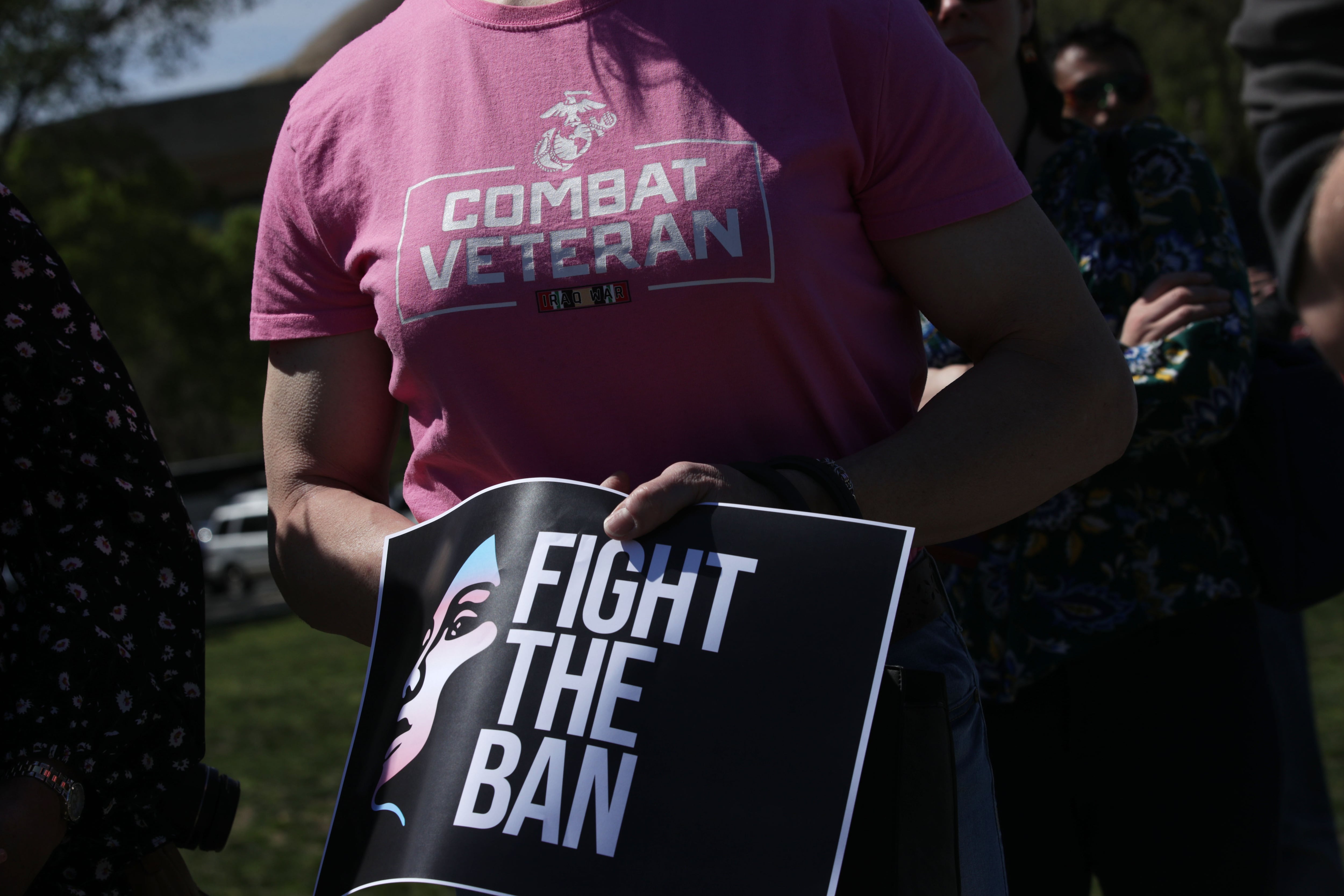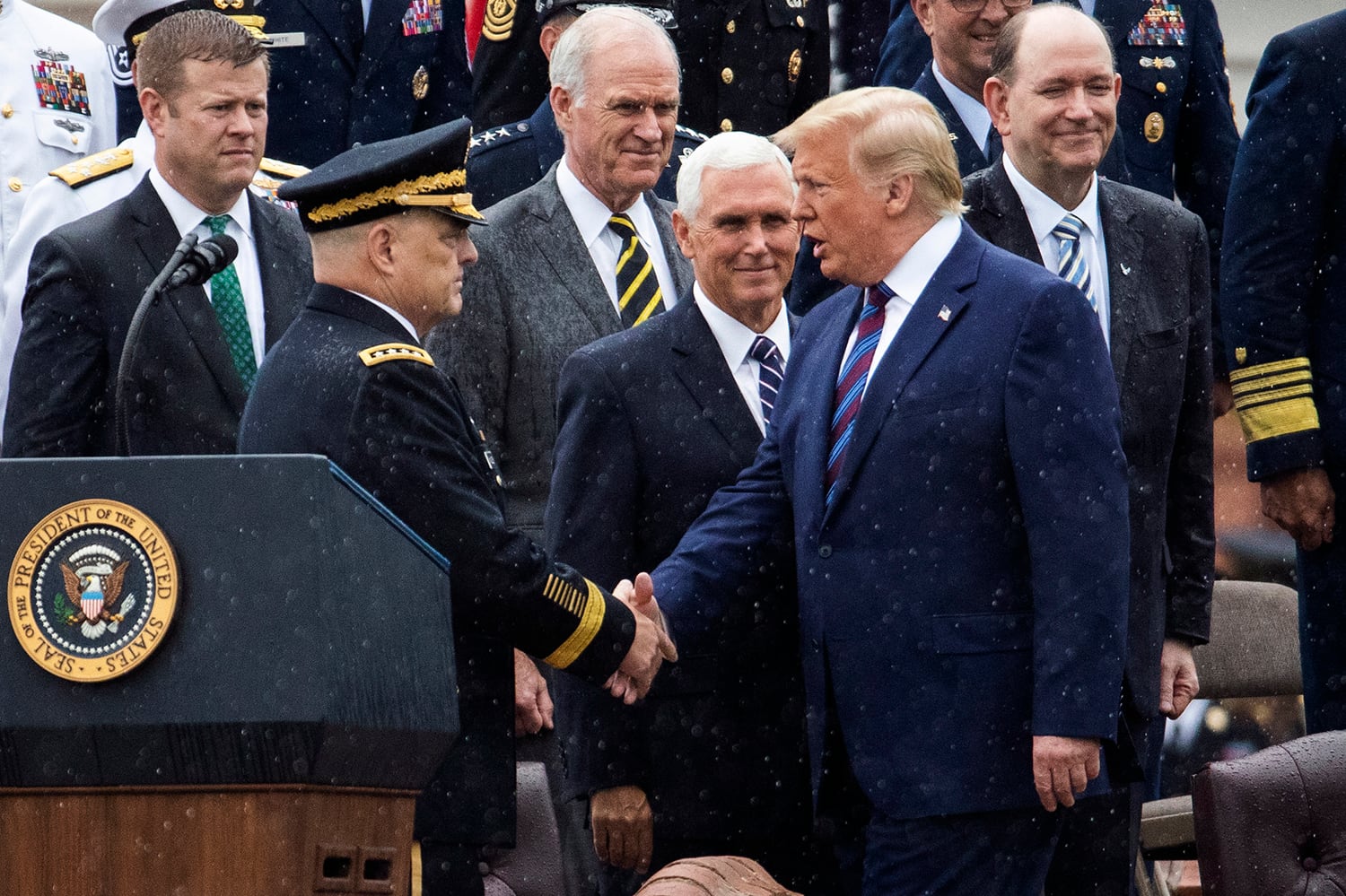WASHINGTON — One of two U.S. Navy MQ-4C Triton unmanned aerial vehicles operating in the Pacific for the last two years has returned home, allowing the service to move forward with Triton development and fielding.
Unmanned Patrol Squadron (VUP) 19, the Navy’s first Triton squadron, began an “early operational capability” deployment in January 2020, sending two air vehicles to Guam to operate under U.S. 7th Fleet’s Task Force 72. About 200 sailors have rotated in and out of theater, working in detachments of about 40 sailors at a time, to support the two large, high-altitude surveillance drones.
Now, one vehicle remains in theater and the other returned home to Naval Air Station Jacksonville, Fla., on Dec. 16. With an air vehicle at home, community leaders say, VUP-19 can focus on training ahead of receiving an upgraded multi-intelligence variant of the aircraft in 2022 and then preparing for the Navy to declare initial operational capability (IOC) in 2023.
Rear Adm. Lance Scott, commander of the Patrol and Reconnaissance Group that oversees all manned and unmanned reconnaissance aircraft in the Navy, told Defense News the last two years of operations overseas gave the Navy more confidence in the UAV’s ability to operate in a relevant environment and the Navy’s ability to sustain it forward.
Still, this baseline configuration — which includes a 360-degree active electronically scanned array (AESA) maritime radar and full-motion electro-optical/infrared video streaming, among other capabilities — only gets the Navy partway to meeting its operational requirements.
Naval Air Systems Command in July tested an upgraded multi-intelligence variant of the Triton, which is what the Navy will ultimately field when it declares IOC. This variant adds signals intelligence into the suite of ISR capabilities on the drone and will allow the unmanned Triton to fully replace the retiring manned EP-3E Aries II.
Scott said the community will now split its focus, continuing to learn operational lessons with the one air vehicle in the Pacific, while also pivoting to rigorous testing and certification activities with the Triton program office to improve the aircraft’s capabilities.
“At this point, we are just building depth on the bench, if you will: actual operations certainly give you that environment to conduct some really quality training for the crews,” Scott said. “We’re at a point here where we can operate safely and effectively, and I’m confident in the way the squadron has been employing the capability as it is today. And then all of that knowledge is really just going to help us into next year as we start the training for the multi-int version.”
Scott said that testing, done hand-in-hand with VUP-19 and the program office, is expected to start after the first UAV is delivered in the fall.
At the same time, the squadron will be building a larger footprint in Jacksonville. Triton maintenance equipment and personnel will move from Point Mugu, Calif., to Jacksonville, and more sailors will start reporting to the squadron as more aircraft in the multi-intelligence configuration are delivered.
Still, there remain technical hurdles to get the Navy where it wants to be with Triton — not only wringing out the upgraded sensor package, but also improving the architecture that will support manned-unmanned teaming, helping take potential targets of interest from the UAVs and automatically cue manned aircraft to go investigate.
Scott said the UAVs proved they could do persistent intelligence, surveillance and reconnaissance and maritime domain awareness, freeing up the manned P-8A Poseidon aircraft from routine patrol missions and allowing them to focus on more complex anti-submarine warfare missions.
The deployment was mostly conducted out of Guam, he said, but VUP-19 demonstrated an expeditionary capability from June to October this year, moving both air vehicles and all the maintenance equipment to Japan to prove not only that they could be mobile but also that the aircraft could operate in more challenging weather environments.
And, he said, “we learned a lot about the logistics side of this in terms of how we set up that supply chain distributed across the 7th Fleet [operating area]. That’s been a lot of goodness there, understanding the system reliability and where we need to improve some of that, which we’ve done with the radar as well as the turrets.
“And so that gets folded in, and then the squadron has been able to really expand the envelope and understand how better to employ the aircraft based on the tasking, which also gets folded back in for this multi-int variant,” Scott added.
Cmdr. Brian Conlan, the commanding officer of VUP-19, said during the same Dec. 13 interview the start of operating a new system is usually when the most challenges arise, and his squadron has been addressing those challenges nonstop for 23 months.
Much of their work these two years “flies in the face of conventional naval aviation,” he said. Rather than worrying about managing fuel consumption and finding divert fields, he said the squadron has been focused on satellite architectures and making sure they can maintain command and control of the aircraft from the operator stations in Jacksonville.
“The new problem sets are exciting to work through, and we’re definitely on a trajectory” to sustain operations in 7th Fleet even while bringing in new capabilities and going through the rigorous testing and certification process leading up to IOC, Conlan said.
Megan Eckstein is the naval warfare reporter at Defense News. She has covered military news since 2009, with a focus on U.S. Navy and Marine Corps operations, acquisition programs and budgets. She has reported from four geographic fleets and is happiest when she’s filing stories from a ship. Megan is a University of Maryland alumna.





